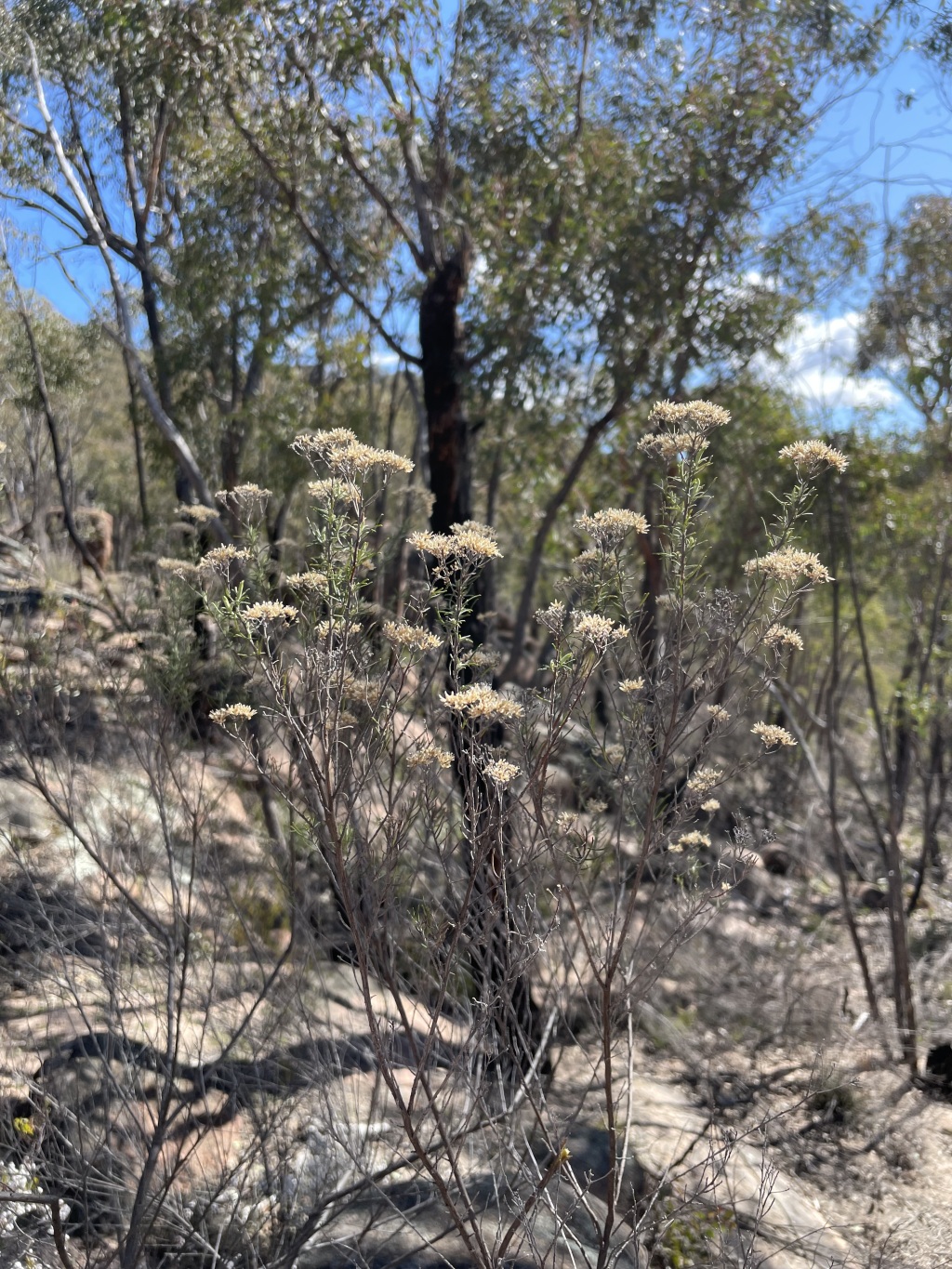Cassinia nivalis
Orchard Ochre CassiniaErect shrub to 1–2(–2.5) m tall; branchlets deep reddish-purple, with spreading conical aculeate hairs, overlaying cottony hairs and sessile glands. Leaves spreading to erect, with a small pulvinus, terete, 15–25(–30) mm long, 0.5–0.7(1.0) mm wide, upper surface dark glossy green, densely aculeate or sometimes almost smooth, dense white cottony hairs below except midrib, apex mucronate, moderately to strongly reflexed, margin revolute to midrib. Inflorescences hemispherical, 1–10 cm diam. Capitula 80–100, cream to ochre-coloured, cylindric, 3.5–5 mm long, 1.5–2.5 mm wide; involucral bracts 14–18, innermost oblong, 3.0–3.2(–3.5) mm long, erect, white towards tip, greenish-brown hyaline in midsection, yellow-brown at base; margin entire, incurved; receptacular bracts c. 3; florets 5(–6). Cypsela cylindric, 0.8–1.0 mm long, 4- or 5-ribbed, mid- to reddish-brown, glabrous or with scattered resin droplets or with minute scattered blunt hairs (mostly < 0.1 mm long except near apex where to 0.1 mm long); pappus 2.2–3.0 mm long. Flowers Jan.–Apr.
GipP, EGL, HSF, HNF, VAlp. Mostly in dry Eucalyptus forests in mountainous regions from the Yarra Ranges east to the Nunniong Plateau, but also in coastal woodland and forest around Lakes Entrance area (e.g. Nyerimilang, Kalimna).
Cassinia nivalis is the only Victorian representative of section Costatae and can be distinguished from other Victorian Cassinia species by cypsela features that are characteristic of this section. These include cypselas that are reddish-brown when mature and have four or five longitudinal ribs (Orchard 2005).
Lowland collections of Cassinia nivalis from the Lakes Entrance area differ from most upland collections in generally having more or less smooth upper leaf surfaces. Most upland collections of C. nivalis generally have quite densely scabrous leaf surfaces (but smooth in a few).
 Spinning
SpinningOrchard, A.E. (2005). A revision of Cassinia (Asteraceae: Gnaphaliae) in Australia. 4. Section Costatae. Australian Systematic Botany 18: 455–471.
